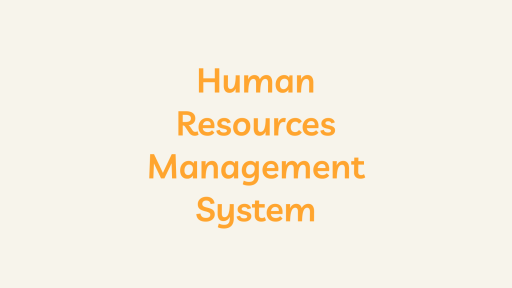Introduction
A Human Resources Information System (HRIS) is an advanced software solution designed to revolutionize the management of human resources within an organization. It acts as a centralized hub, integrating various HR functions and processes to create an efficient and cohesive approach to HR management.
Key Components of Human Resources Information System (HRIS)
- Employee Information Management:
- HRIS goes beyond basic data storage, offering a dynamic platform to manage comprehensive employee profiles. This includes personal details, contact information, employment history, skills, certifications, and even performance feedback.
- Recruitment and Applicant Tracking:
- In the recruitment domain, HRIS facilitates a seamless process from job posting to candidate selection. It incorporates applicant tracking systems that automate resume screening, interview scheduling, and communication, ensuring a streamlined and organized hiring process.
- Time and Attendance Management:
- HRIS is crucial in tracking employee attendance, working hours, and leave. This information is essential for accurate payroll processing, compliance with labor laws, and overall workforce management.
- Performance Management:
- The performance management module within HRIS enables organizations to set goals, conduct regular evaluations, and provide continuous feedback. It fosters a culture of improvement and aligns individual performance with organizational objectives.
- Training and Development:
- HRIS supports the planning, execution, and tracking of employee training programs. It identifies skill gaps, recommends relevant courses, and ensures that employees have access to continuous learning opportunities, promoting professional development.
- Benefits Administration:
- Managing employee benefits is a complex task, and HRIS simplifies this process. It oversees benefits administration, ensuring compliance with regulations and effective communication with employees about available benefits.
- Payroll Processing:
- Automating payroll calculations, tax deductions, and other financial aspects of compensation is a hallmark feature of HRIS. This reduces errors, enhances accuracy, and ensures timely payroll processing.
- Employee Self-Service Portals:
- HRIS includes self-service portals empowering employees to manage their information. From updating personal details to accessing pay stubs and requesting time off, these portals enhance transparency, efficiency, and employee satisfaction.
Benefits of Human Resources Information System (HRIS)
- Increased Efficiency:
- HRIS allows HR professionals to focus on strategic initiatives by automating repetitive tasks. This efficiency saves time and contributes to a more proactive and value-driven HR function.
- Data Accuracy and Security:
- Centralized data storage eliminates discrepancies and ensures the accuracy of employee information. Robust security measures safeguard sensitive data, addressing concerns related to data breaches and ensuring compliance with privacy regulations.
- Improved Decision-Making:
- Real-time data and analytics provided by HRIS enable data-driven decision-making. Insights into workforce trends, performance metrics, and other key indicators empower HR professionals and management to make informed and strategic decisions.
- Enhanced Compliance:
- HRIS plays a vital role in ensuring compliance with labor laws and regulations. Organizations reduce the risk of non-compliance and associated legal consequences by automating processes related to employee records, benefits, and payroll.
- Employee Engagement:
- Self-service portals and easy access to information contribute to increased employee engagement. HRIS fosters a culture of transparency, communication, and empowerment, aligning employees with the organization’s goals.
Challenges and Considerations
- Implementation Costs:
- While the benefits of HRIS are substantial, organizations must be prepared for the initial investment required for implementation. Careful budgeting and cost analysis are crucial to ensure a successful and sustainable HRIS deployment.
- Integration with Existing Systems:
- Integrating HRIS with other existing systems, such as finance or project management, requires meticulous planning. Compatibility issues and seamless data exchange are critical considerations for a successful integration process.
- Training and Change Management:
- Employee training and change management strategies are essential components of successful HRIS implementation. Adequate training ensures that HR professionals and employees can effectively navigate and utilize the new system’s features.
- Data Security and Privacy:
- Given the sensitive nature of HR data, robust security measures are non-negotiable. HRIS solutions must adhere to the highest data security and privacy compliance standards to safeguard employee information.
Conclusion
In conclusion, a Human Resources Information System is not just a tool; it’s a transformative force in the realm of HR management. Its diverse functionalities, from employee data management to performance analysis, contribute to organizational success. While challenges exist, the long-term benefits of HRIS in terms of efficiency, compliance, and employee engagement make it a cornerstone of modern HR practices. As technology evolves, HRIS will continue to evolve, shaping the future of HR management practices.





